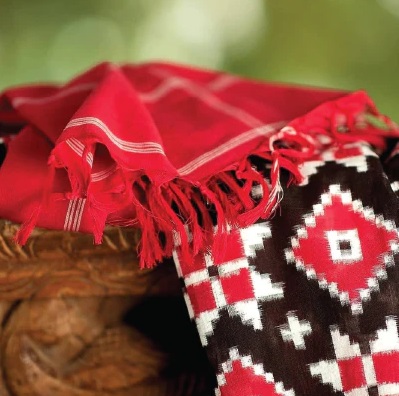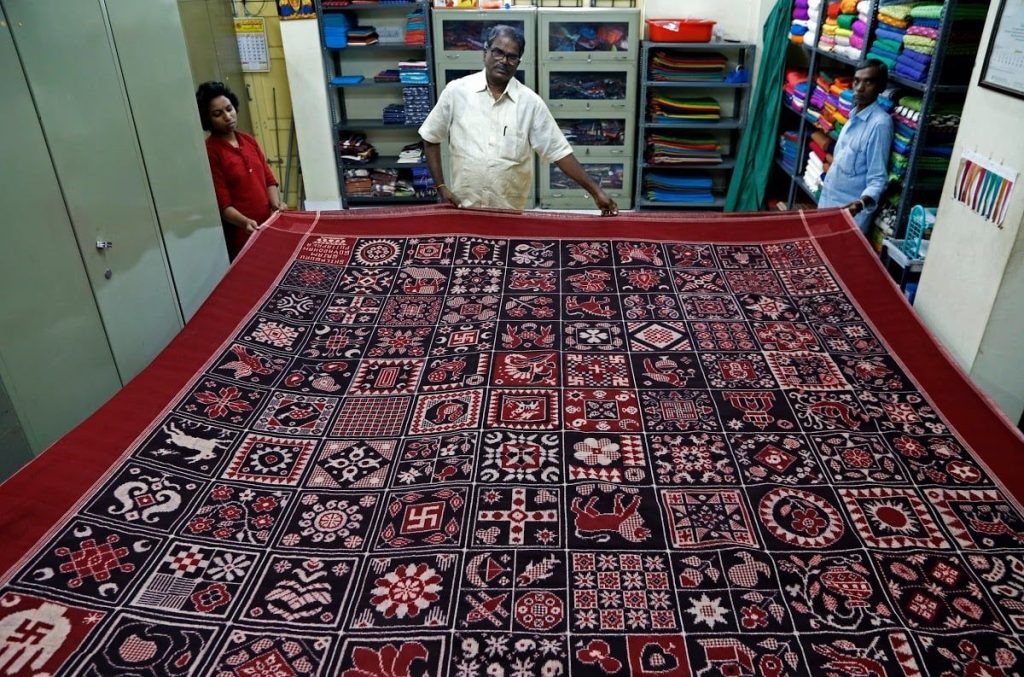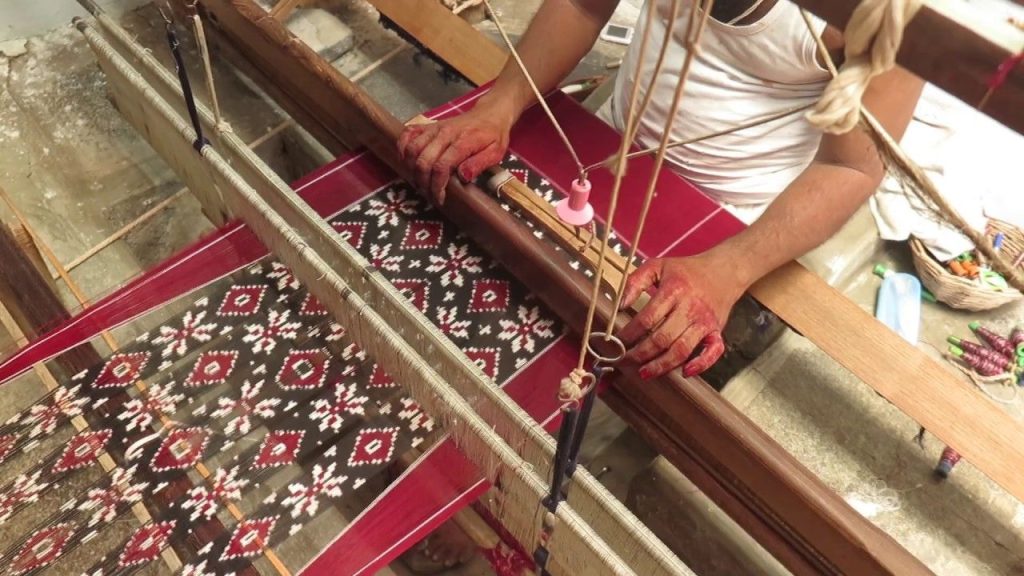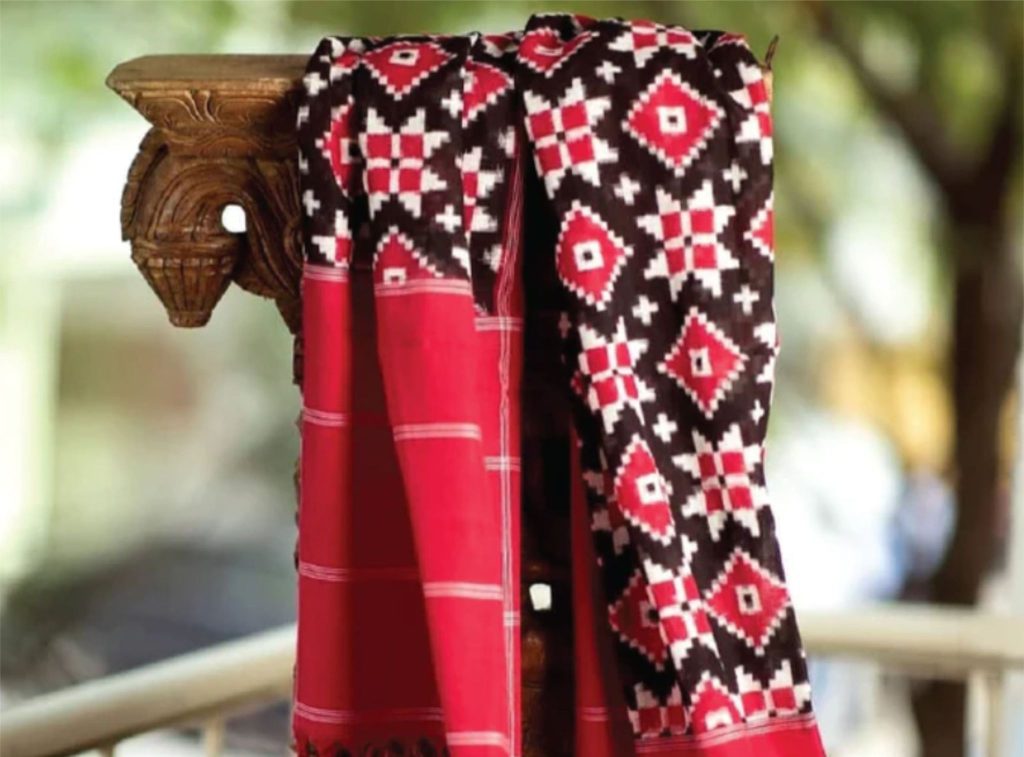Krispin Joseph Px
Telia Rumal is a Yarn oil treatment method creating an exquisite Rumal. These indigenous fabric art practices originated from Chirala in Andhra Pradesh. The bundles and threads must be sunk in Sesame oil for at least 21 days; before draining out, they are put for resist dyeing based on the designs and then placed on the loom for weaving and making unique from those threads.

credit: www.sundarisilks.com
Telia Rumal, also known as Ikat Fabric, is now perishing art because the weavers had nearly quit making Telia Rumals. This Rumal has gained prestige worldwide for its beauty and creative finesse. Ikat comes from the Malay-Indonesian phrase Mengikat, which means to bind, knot, or curl around. People who cultivated skills in this dying art took the lead in presenting this in Puttapaka village of Nalgonda neighbourhood in Telangana. Newly Puttapaka Telia Rumal was accorded a Geographical indication (GI) tag. The world recognises these practices as indigenous art.

credit: The Hindu
This Rumal was famous for a long time when villagers from Chirala started producing, and that renowned cotton Telia Rumal in the double-Ikat technique. Now people believe that two brothers named Malliah and Venkiah taught the method and layout of Telia Rumal to the weavers that flourished around the world. This Rumal maintains warmth in cold and cool in warm weather because of this Sesame oil, which they sunk for 21 days. These fabrics use as a Barter system for other materials in Arab countries and the middle east. Thus, this imparted a muscular smell and oily sense to the fabric, which enabled keep the head relaxed and ‘free of dust’ Because of all these comfortabilities, Telia Rumaal was used as the turban by men in the middle east for many ages.

These oil-treated fabric works as water-repellent, so fishermen and women use this as lungi because they help them with saltwater disease and allergies. This was amongst the first water-repellent cloths developed ever! Brownish red, dark blue, dark brown and black are the colours of the Teila Rumal colour palette. The natural dyes are traditionally alizarin red, indigo blue and iron shavings, and flowers, elephants, birds, lions, swastika, wheels, and rangolis are the typical motifs in this fabric art. The before patterns were strictly geometric or vegetal due to the shoppers’ choice. After the 1930s, the artisans combined symbolic elements, which demanded better weaving skills.





